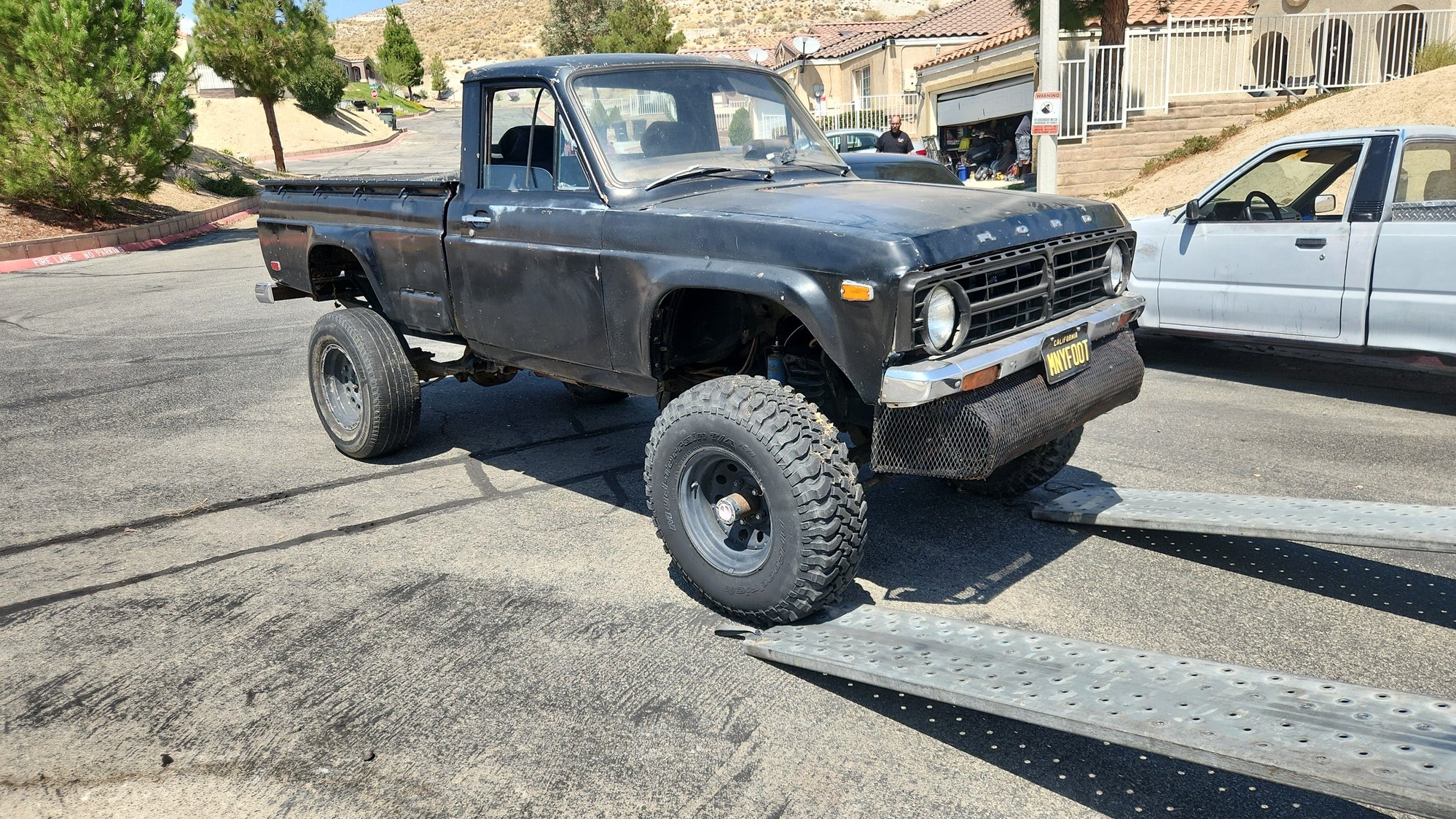Annually, experts at J.D. Power release their Vehicle Dependability Study, a report that assesses the quality and reliability issues experienced by original owners of their vehicles.
This year’s edition focused specifically on models from the 2022 production year. At that time, manufacturing across the automotive sector was still facing challenges due to pandemic-related disruptions.
Despite these obstacles, certain pickup trucks managed to outperform others in terms of dependability.
Truck enthusiasts will likely recognize some familiar names on this list, though a few surprising exclusions may catch readers off guard. Is your go-to pickup among the top performers?
Most Reliable Trucks
When it comes to choosing a truck, reliability isn’t just a nice-to-have — it’s essential. Whether you’re hauling heavy loads, tackling tough job sites, or just need a dependable daily driver, a truck that won’t let you down is worth its weight in gold.
With so many options on the market, it can be tough to separate the genuinely bulletproof from the ones that just look the part. In this article, we cut through the hype and focus on the trucks that have earned a reputation for rock-solid dependability.
Backed by real-world performance, owner satisfaction, and long-term durability, these are the most reliable trucks you can buy right now.
2022 Chevrolet Colorado
The 2022 Chevrolet Colorado is recognized as one of the most reliable trucks, offering a strong V-6 engine and a turbocharged inline four-cylinder diesel among its powertrain options, giving plenty of capability whether for work or off-road adventures.
Its performance is enhanced by a range of trim levels that vary from a no-frills work truck to a rugged overlanding vehicle.
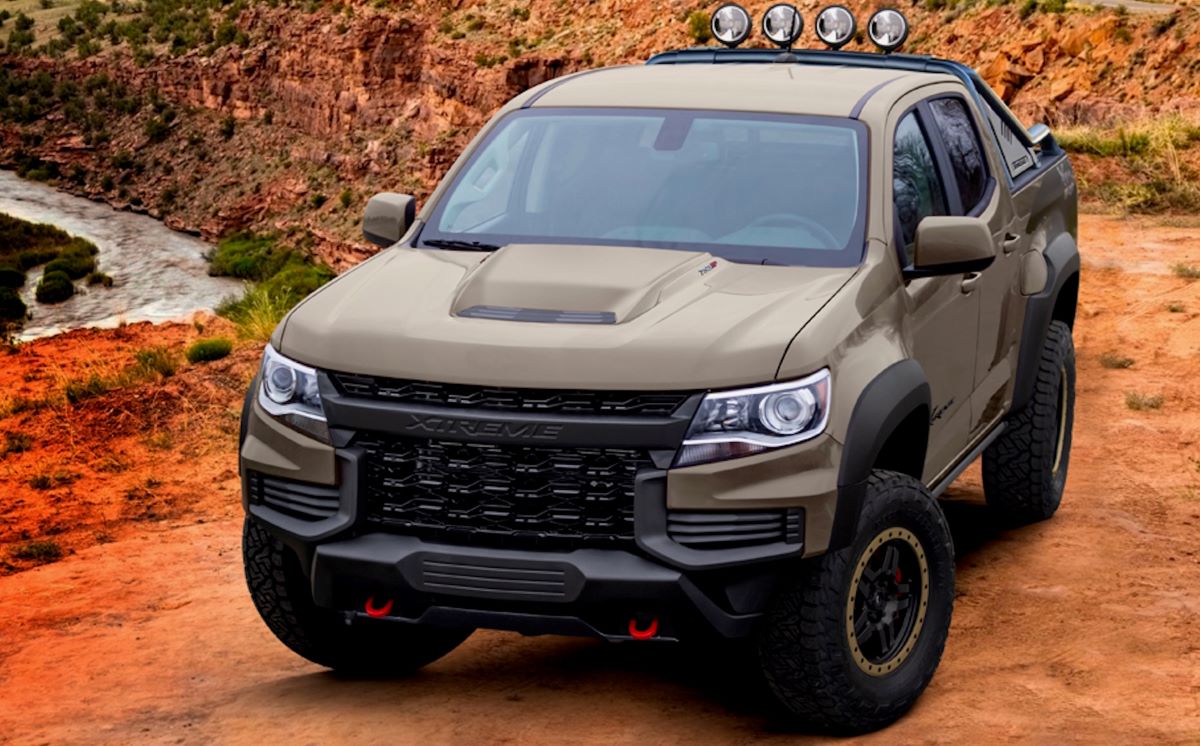
Although the interior cabin can feel somewhat drab and cheap, J.D. Power’s ranking of the Colorado as a top reliable pickup suggests that the materials may actually be more durable than they seem.
The truck’s approximate starting price is $16,000, it holds an NHTSA overall safety rating of four stars, and is available with a 2.5-liter I-4, 2.8-liter turbodiesel I-4, or 3.6-liter V-6 engine. Its fuel economy ranges from 16-20 mpg in the city to 18-30 mpg on the highway.
Pickup trucks have long been a favorite among American drivers, and the Chevrolet Colorado has held its ground in this segment for over 15 years.
Its longevity can be attributed to its rugged off-road capability and impressive towing performance within the midsize truck category, all while avoiding unnecessary frills that drive up costs. While premium competitors might surpass it in terms of refinement and interior quality, the Colorado offers a well-rounded package at a reasonable price.
The base engine, producing just 200 horsepower and 191 lb-ft of torque, isn’t particularly noteworthy, but the available V6 and turbo-diesel four-cylinder engines have earned genuine respect among truck buyers.
With a maximum payload capacity of 2,181 pounds and a towing capacity of 7,700 pounds, the Colorado continues to be a formidable rival to other midsize pickups like the Toyota Tacoma and Ford Ranger.
The price of the 2022 Chevrolet Colorado varies significantly depending on configuration. The most affordable setup features the Extended Cab paired with a Long Box and a 2.5-liter base engine.
In this form, the Work Truck (WT) starts at $25,200, while the LT version adds $2,500. Off-road-oriented trims like the Z71 and ZR2 are only available with four-wheel drive in Extended Cab configuration, starting at $36,500 and $42,600, respectively.
However, buyers will encounter some restrictions when pairing certain engines with drivetrains. All prices are MSRP and exclude tax, registration, licensing, and Chevrolet’s $1,195 destination charge.
From a driving perspective, the Colorado isn’t the most graceful vehicle, but it performs competently for its class. While it’s undeniably a heavy truck, the steering is light enough to handle city driving with ease, although it lacks feedback, which can be a drawback in off-road situations.
The ZR2 trim comes better prepared for such conditions, featuring Multimatic DSSV position-sensitive dampers, electronic locking differentials, a dual-range transfer case, and an extra two inches of ground clearance.
These mechanical enhancements make a meaningful difference in off-road capability. Braking is average for a vehicle of this size—adequate for its performance level—with a solid pedal feel and quick response, though extra stopping distance is needed at high speeds.
Comfort is another strong point across the range, with the suspension doing a good job of absorbing road imperfections. It remains comfortable even on longer journeys, though it stops short of being luxurious. Choosing off-road tires results in added road noise, but this is a tradeoff for better grip and control.
Overall, the 2022 Chevrolet Colorado is a solid truck that has aged well. Its rugged design is backed by real capability, including best-in-class towing in some configurations.
While it falls short on standard features and lacks many modern driver-assist technologies, its impressive reliability ratings help balance the equation. Buyers can add contemporary features if they’re willing to spend more, though this can push the truck’s price into less appealing territory.
For those seeking a more refined or more hardcore off-road option, alternatives exist, but the Colorado strikes an effective balance between utility, comfort, and affordability. Even after all these years, it remains a smart choice for those needing a versatile midsize pickup.
2022 Chevrolet Silverado 1500
The 2022 Chevrolet Silverado 1500, Chevrolet’s iconic full-size truck, received a significant upgrade with a redesigned cabin on most trim levels that greatly improved its design, quality, and overall appeal.
Alongside its excellent powertrain options, the Silverado 1500 offers a pleasant driving experience, although it’s not our favorite pickup in the segment.
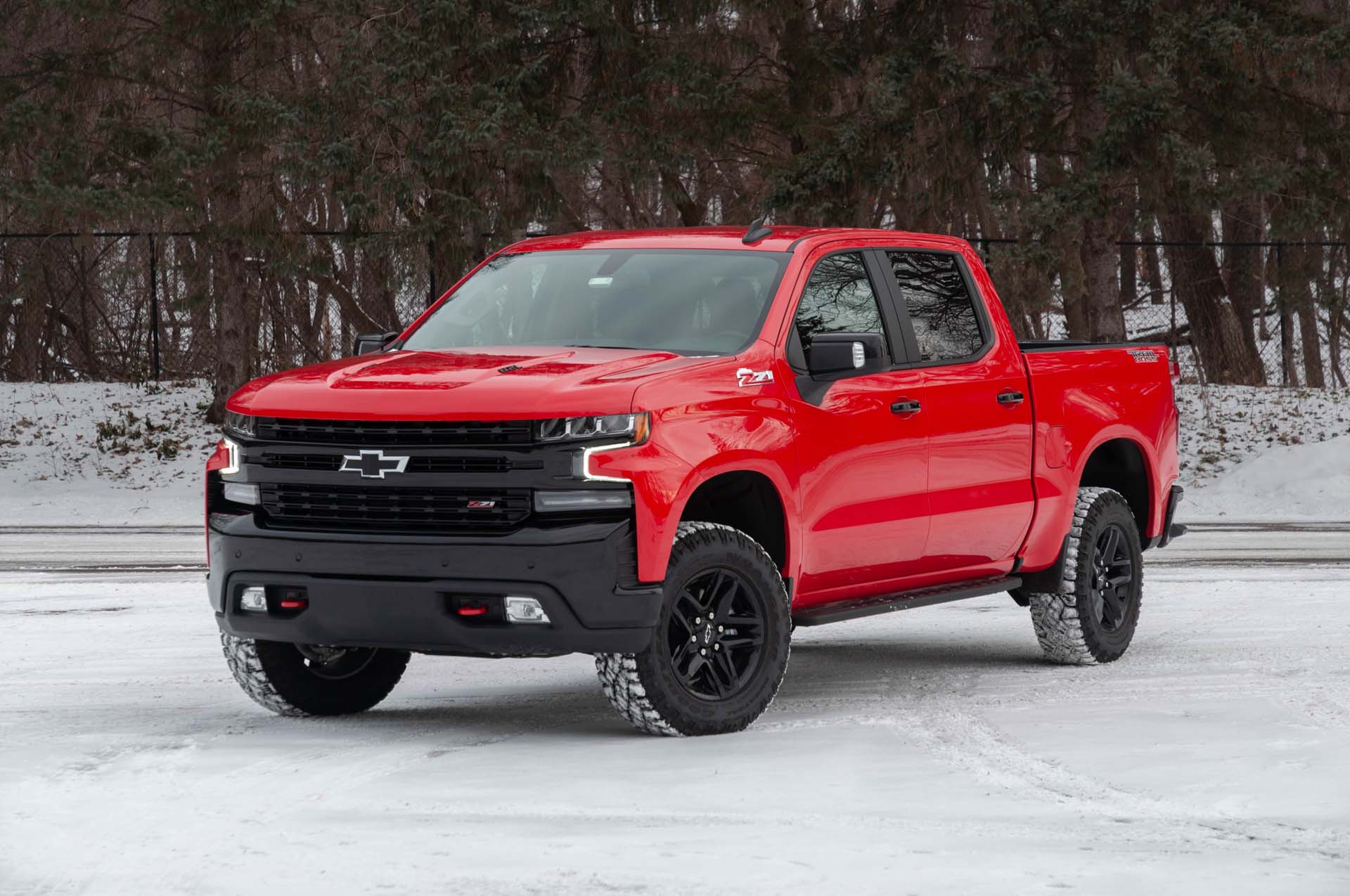
That said, none of its competitors from other manufacturers made the list of the most reliable trucks. The approximate starting price is $23,000, with safety ratings from NHTSA ranging from four to five stars overall.
Engine options include a 2.7-liter turbocharged I-4, a 3.0-liter turbodiesel I-6, a 5.3-liter V-8, and a 6.2-liter V-8. Fuel economy ranges between 13-23 mpg in the city and 17-31 mpg on the highway.
2022 Chevrolet Silverado HD
The 2022 Chevrolet Silverado HD boasts strong reliability scores along with outstanding towing and payload capacities, making it a trustworthy choice for heavy-duty long-haul drives.
It also offers a variety of technologies and features to ease trailer towing and cargo management in the bed.
Although the optional turbodiesel engine performs excellently, the standard gasoline V-8 is somewhat disappointing.
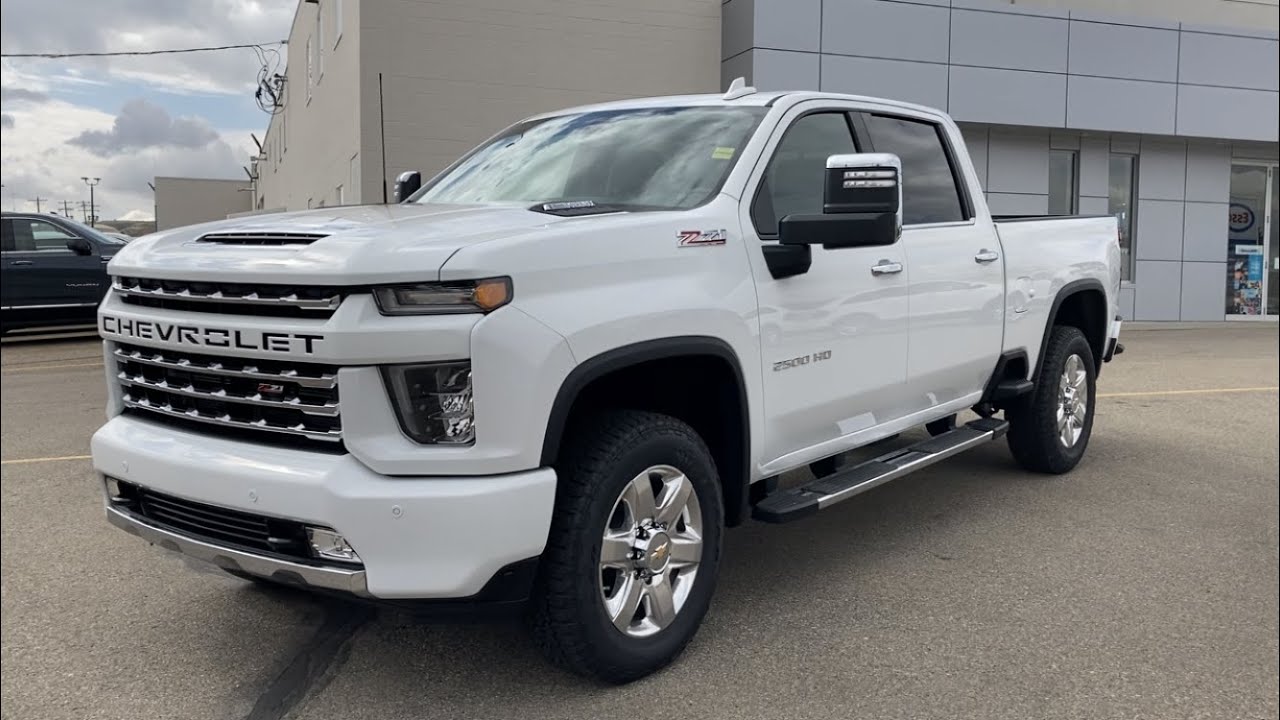
Furthermore, the interior feels uninspired, with a dull design, unimpressive technology, and cheap-feeling materials.
Perhaps the redesigned interior and other improvements in the 2024 Silverado HD will help it earn a spot on J.D. Power’s most reliable truck ratings in the coming years.
Its approximate starting price is $34,000, though safety and fuel economy ratings are not yet available. Engine options include a 6.6-liter V-8 and a 6.6-liter turbodiesel V-8.
2022 GMC Canyon
When comparing the 2022 GMC Canyon to the Chevrolet Colorado, it can sometimes be difficult to distinguish between the two, as they share many similarities.
It is reassuring, however, that both have strong reliability ratings. The GMC Canyon features creased fender panels and a larger grille that give it a somewhat more distinctive appearance than the Colorado.

Beyond the styling, the two trucks share much in common, including the interior, bed size, and engine options. The Canyon starts at approximately $23,000 and holds a four-star overall safety rating from NHTSA.
Engine choices include a 2.5-liter I-4, a 2.8-liter turbodiesel I-4, and a 3.6-liter V-6. Its fuel economy ranges from 17-20 mpg in the city and 24-30 mpg on the highway.
The 2022 GMC Canyon is an excellent option for drivers seeking the capabilities of a full-size pickup truck, but within a more compact, midsize package.
Its rugged body-on-frame design, along with powerful engine options such as the V-6 and diesel engines, helps it deliver a strong performance. The Canyon offers a maximum towing capacity of 7,700 pounds, making it a solid choice for those needing towing power without the bulk of a full-size truck.
For off-road enthusiasts, the AT4 trim is particularly appealing, offering 31-inch tires and an off-road suspension. Available in both extended or crew cab configurations with two bed lengths, the Canyon is just as versatile as its sibling, the Chevrolet Colorado, though it’s generally regarded as more refined in its design.
However, the Denali trim, while upscale in appearance, may not justify its price due to its lackluster interior and absence of advanced tech features. Despite this, the 2022 GMC Canyon remains a great alternative to the full-size GMC Sierra for anyone wanting a smaller and more affordable truck.
For 2022, GMC has made only minor changes to the Canyon lineup. A notable addition is the Denali Black Edition, which adds dark exterior features such as low-gloss-black 20-inch wheels, black assist steps, and gloss-black exhaust tips. The Black Edition also includes all-weather floor liners inside. The previously available High Elevation package has been rebranded as the Elevation Premium package.
Pricing for the 2022 GMC Canyon starts at $30,480, and can go up to $48,395, depending on the trim and options selected.
The most basic model, the 2WD Elevation Standard, starts at $30,480, while the more premium 4WD Denali tops out at $48,395. For those looking for a balance of price and capability, the Canyon AT4 offers an appealing off-road option, though it’s not quite as capable as the Colorado ZR2.
A better choice might be the Elevation model, especially when paired with the optional V-6 engine and all-wheel drive. The crew-cab body style is a preferred option, as the extended cab’s back seat is quite cramped.
The Elevation trim comes equipped with an 8.0-inch touchscreen with Apple CarPlay, Android Auto, and a subscription-based Wi-Fi hotspot, as well as automatic climate control, a power-adjustable driver’s seat, a dampened tailgate, and remote start.
Adding the Elevation Premium package includes a heated steering wheel, heated front seats, and leather upholstery, while the Driver Alert package provides useful safety features like lane-departure warning and rear parking sensors.
When it comes to performance, the Canyon offers three engine options, but the base 2.5-liter four-cylinder is best avoided. The standard 3.6-liter V-6 engine, which produces 308 horsepower, is more desirable and is paired with an eight-speed automatic transmission.
The V-6 features cylinder deactivation to improve fuel efficiency, and it’s one of the quicker mid-size trucks in its class. For those prioritizing towing and fuel economy, the diesel four-cylinder engine is an excellent choice, although it comes with a higher price tag. The Canyon’s ride quality strikes a balance between firm and soft damping, and it handles rough roads well, soaking up most imperfections while minimizing harshness.
The AT4 model, with its upgraded suspension, enhances off-road performance. On highways, the Canyon remains stable, while its smaller dimensions make it easier to maneuver in tight spaces. The brake pedal offers responsive feedback, providing good control.
In terms of towing and payload, the Canyon with the four-cylinder engine can tow up to 3,500 pounds and carry a payload of 1,599 pounds. However, when equipped with the diesel engine, it boasts a maximum towing capacity of 7,700 pounds and a payload capacity of 1,605 pounds.
Fuel economy estimates for the 2022 Canyon vary depending on the engine. The four-cylinder engine achieves up to 19 mpg in the city and 25 mpg on the highway, while the V-6 engine is rated for 18 mpg in the city and 25 mpg on the highway.
The diesel version is more fuel-efficient, with estimates of 20 mpg in the city and 30 mpg on the highway. During real-world testing on a 75-mph fuel economy route, the diesel-powered Canyon earned 28 mpg, while the V-6 version achieved 22 mpg.
The Canyon’s interior prioritizes functionality over luxury, with a straightforward layout and controls that are easy to operate. However, the center console is somewhat hindered by a large shifter, and the plastic toggle switches can feel cheap, especially in higher trims like the Denali.
While the interior in the Denali trim doesn’t quite live up to its premium name, the front seats offer plenty of space and comfort. The rear seats, however, are limited in legroom, making long trips uncomfortable for adults.
Despite the interior being somewhat tight in the back, the Canyon offers the most cargo-bed volume in its class and provides excellent storage solutions, including a deep center-console bin, multiple door pockets, and other compartments for loose items.
Additionally, the crew cab features a large plastic storage bin under the rear seat for larger items, making it a practical option for those needing extra storage.
2022 GMC Sierra 1500
The 2022 GMC Sierra 1500, particularly in the range-topping Denali Ultimate trim, combines luxurious finishes with practical, work-ready capabilities.
Regardless of the configuration, the Sierra drives with refinement and offers competitive towing and hauling capacities.
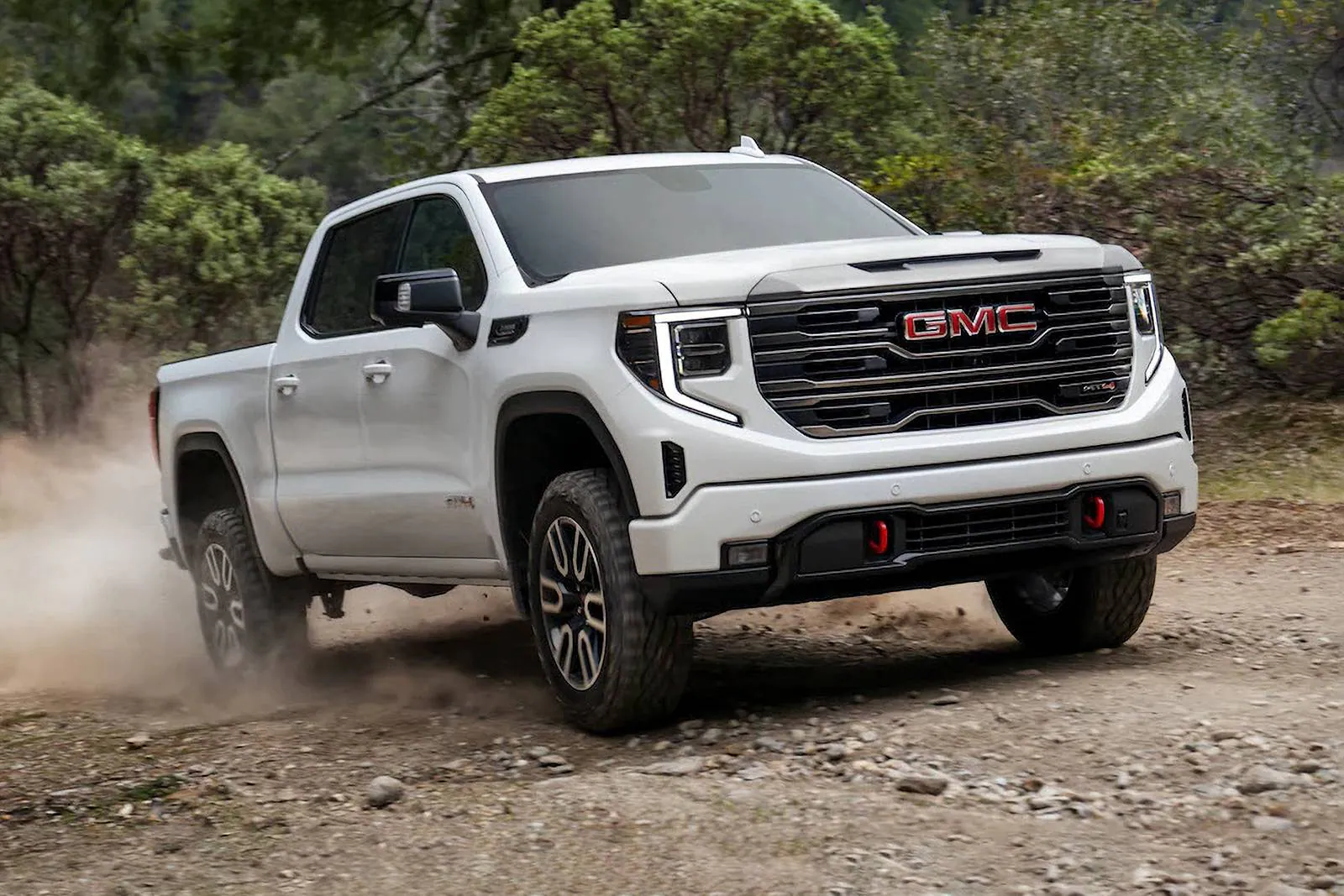
Like most GMC models, it closely resembles its Chevrolet counterpart, the Silverado 1500, which contributes to its strong pickup truck reliability ratings.
The Sierra starts at around $26,000 and carries safety ratings from NHTSA between four and five stars overall.
Engine options include a 2.7-liter turbocharged I-4, a 3.0-liter turbodiesel I-6, a 5.3-liter V-8, and a 6.2-liter V-8. Fuel economy ranges from 13-23 mpg in the city and 17-31 mpg on the highway.
Worst Pickups Trucks Ever Sold
Pickup trucks are the quintessential American vehicle. They embody many American values: they’re big, tough, and built like brick outhouses.
Beyond their ruggedness, pickup trucks have always carried an adventurous spirit; they are designed to endure and can be counted on when you need to haul heavy loads across town.
Throughout history, some incredible pickup trucks have been manufactured, but have you ever thought about what made certain models so successful?
For instance, when you consider the Ford F-150, do you understand what set it apart from other trucks available in the market?
The pickup truck segment has remained one of the most prosperous in the American automotive industry for many years.
Unfortunately, some models have also experienced significant failure. In this article, I will delve into some of the best and worst pickups ever produced.
2003-2006 Chevrolet SSR
Chevrolet truly created one of the worst pickup trucks in automotive history with the SSR series. This was especially surprising and out of character for such a globally recognized and established automaker like Chevrolet.
The SSR should never have been labeled a pickup truck to begin with. It lacked power, was incapable of handling typical work tasks, and its performance didn’t even match that of many ordinary cars.

It’s no surprise that Chevrolet only sold just over 24,000 units between 2003 and 2006, never exceeding 9,000 units in any single year.
Additionally, its appearance was toy-like and extremely unconvincing completely unlike what a pickup truck should look like and it faced widespread criticism for this reason.
The 2003 Chevrolet SSR, available in model years 2003 to 2006, offers a unique blend of a roadster and a pickup truck, creating a vehicle class of its own.
This limited-production vehicle features a fully usable cargo bed and a retractable hardtop, making it stand out from other vehicles on the market. Built on a modified Trailblazer chassis, the SSR shares many of its drivetrain and suspension components with its sport-utility vehicle counterpart.
Under the hood, it’s powered by a 5.3-liter Vortec V8 engine, sending power to the rear wheels. The SSR also comes equipped with thicker anti-roll bars, larger brakes, and retuned shocks to enhance its sporty performance.
The Chevrolet SSR combines the styling of a late ’40s Chevy pickup with the performance attitude of a muscle car and the enjoyment of a roadster, providing an entertaining and unique driving experience. Edmunds describes it as a solution to a question that no one really asked.
The SSR has a starting price of $19,985 for a 2003 LS Regular Cab model with 44,200 miles, a great price, and $4,927 below market. Another 2003 SSR LS Regular Cab is listed for $23,995 with 16,906 miles, available at Corvette Warehouse.
Both vehicles come with features like leather seats, a power driver seat, an upgraded stereo, a trip computer, and a towing hitch. Although the SSR is a two-seater that weighs nearly 5,000 pounds and costs close to the price of a Corvette, it offers solid performance, distinctive styling, and generous luggage space.
Despite being a niche vehicle, the SSR offers an interesting alternative to traditional pickups and is built for those who appreciate its unique design and functionality. With a limited production, those interested in purchasing one should act quickly as these vehicles won’t be available for long.
1972 Ford Courier
Despite its bold appearance, the 1972 Ford Courier was a failure. This model year’s pickup truck is regarded as one of the worst trucks ever produced and continues to be a blemish on Ford’s reputation even today.
From the moment it hit the road, the truck was a disappointment. Its exterior featured a flimsy frame, and the interior was constructed from cheap, low-quality materials.
It’s unfortunate because it could not handle demanding work or heavy loads, and both its exterior and interior structures were weak.
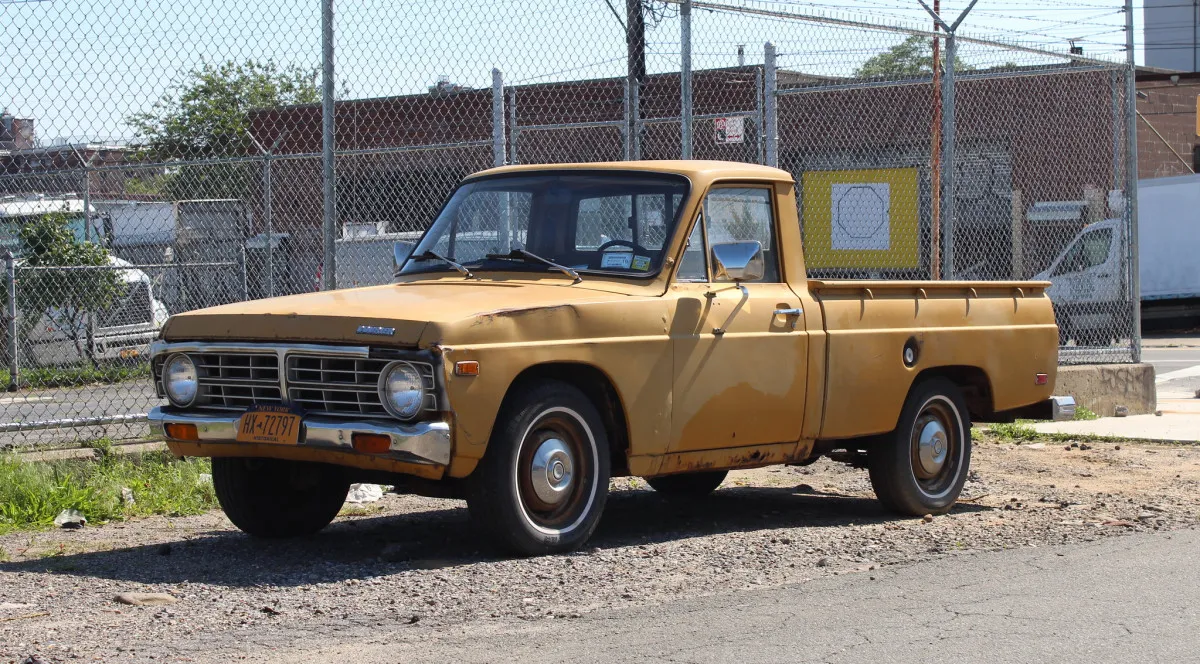
The first generation of the Ford Courier was launched in the 1972 model year, priced at just over $3,000 USD (equivalent to approximately $17,969 in 2018).
Manufactured by Mazda (Toyo Kogyo) and imported by Ford Motor Company, the Courier was developed as a response to the unexpected popularity of small pickups from Toyota and Nissan (Datsun).
Throughout the first generation (1972-1976), the Ford Courier underwent several changes in badging. In 1972, the tailgate displayed “Ford Courier” in large, raised letters, while a smaller “Courier” badge was located on the front of the hood.
From 1973 to 1976, the badging on the hood simply read “Ford,” with variations on the tailgate. In 1973, the tailgate featured “Courier” in large letters, along with a small “Ford” badge on the upper left. By 1974, the tailgate had “Ford” in large letters, with the “Courier” badge placed on the lower right.
In 1976, the Courier received a design update, lengthening the cab by 3 inches (76 mm) and adding extra trim to the grille.
Under the hood, the Ford Courier was equipped with a 1.8L (1800cc) 4-cylinder engine with an overhead cam, offering a compression ratio of 8.6:1. The engine produced 74 horsepower (55 kW) at 5,070 rpm and 92 lb-ft (125 N·m) of torque at 3,500 rpm. The fuel tank capacity was 11.9 gallons, using an electric pump for fuel delivery.
The truck’s axle ratio was 4.11, and it featured a 4-speed manual transmission with the following gear ratios: 1st gear at 4.02, 2nd at 2.40, 3rd at 1.51, and 4th at 1.00, with a reverse gear at 4.02. The clutch diameter was 8.46 inches with hydraulic actuation. In 1976, a 5-speed manual transmission became available, and a 3-speed automatic was offered as an optional upgrade.
2006 Honda Ridgeline
The 2006 Honda Ridgeline was a very disappointing pickup truck. Its bed was smaller than those of most other trucks, lacking sufficient space to haul items or function as a proper truck should. Over time, it has also proven to be unreliable in various aspects.
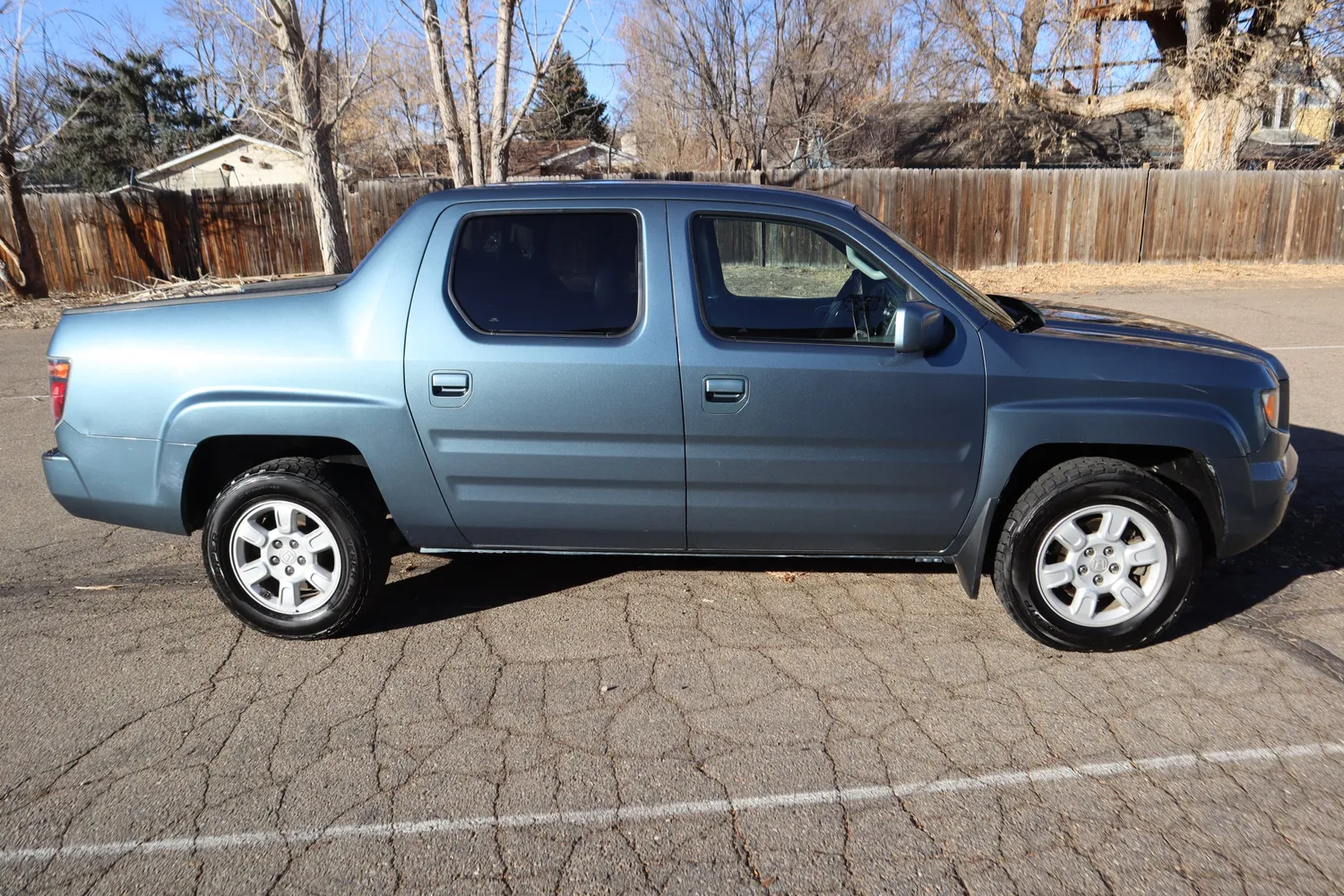
The truck’s poor build quality ultimately led to its failure, and today it is rarely discussed, much less purchased. It remains a dark footnote in Honda’s history.
2002 Subaru Baja
The 2002 Subaru Baja stands as one of the worst vehicles Subaru has ever produced and ranks among the most disappointing pickup trucks to ever enter the market.
Given that it had virtually no trunk space at all, it was both a bold and misguided move for Subaru to even label it a pickup truck, considering just how poorly it performed.

Even more unfortunately, the truck was equipped with a weak 2.5L engine that could never match the performance of its contemporaries, let alone today’s modern powertrains.
Its small windows and tiny bed contributed to it being a gas guzzler, with neither its appearance nor its performance justifying the poor fuel economy.
The 2006 Honda Ridgeline redefines the concept of a pickup truck, offering a unique blend of features that set it apart from traditional models. Selling Points: It comes with standard all-wheel drive, a spacious cab that accommodates five adults, a roomy trunk beneath the cargo bed, and a dual-action tailgate.
Deal Breakers: However, the Ridgeline falls short with uncomfortable front seats, a non-expandable cargo bed, limited off-road capability, and a relatively low towing capacity. Our Advice: The 2006 Honda Ridgeline is an ideal choice for daily commuters who engage in occasional DIY projects and need to tow lighter loads.
Commercial truck buyers, individuals with heavier payload and towing needs, off-road enthusiasts, and those looking to overcompensate for something might still prefer options like Chevy, Dodge, Ford, GMC, or Nissan.
For most personal-use truck buyers, who typically drive solo, stay on dry pavement, and rarely use the bed or hitch for hauling, Honda has tailored the Ridgeline perfectly. The truck was designed with this user in mind as it marks Honda’s first-ever pickup.
The Ridgeline has faced criticism from traditional truck owners who argue that it falls short without a V8 engine, lacks true off-road capabilities, and doesn’t have the towing or hauling capacity of more robust pickups. While it is true that the Ridgeline isn’t built for heavy towing or serious off-roading, it excels in daily commuting, offering best-in-class handling on paved roads.
It’s also versatile enough to take a family on weekend trips, whether it’s to the beach, mountains, or the local hardware store. Moreover, the Ridgeline can tow or haul more than most users would ever need, making it a practical choice for many.
This is why the 2006 Honda Ridgeline was selected as Autobytel’s Editors’ Choice for 2006 Truck of the Year and earned praise from other publications and the North American Truck of the Year panel. The 2006 Ridgeline is available in RT, RTS, and RTL trim levels, with prices starting at $28,250 (including a $550 destination charge).
The base RT model comes with a 247-hp V6 engine, VTM-4 all-wheel drive, stability and traction control, four-wheel-disc antilock brakes with EBD and brake assist, as well as both side-impact and side-curtain airbags. Standard features also include air conditioning, tilt steering wheel, power windows (including the rear slider), power door locks, cruise control, and keyless entry.
Additionally, the RT comes equipped with a heated wiper-rest zone, a 100-watt audio system with a CD player, all-weather floor mats, cargo bed lighting, a manual driver’s seat height adjuster, and steel wheels.
Upgrading to the $30,625 Ridgeline RTS adds alloy wheels, a power driver’s seat, a 160-watt audio system with a six-disc CD changer, dual-zone automatic climate control, and an outside temperature gauge.
The $31,490 Ridgeline RTL features leather seat upholstery, a HomeLink programmable transmitter, a compass, and heated front seats. The RTL trim also offers options like a power sunroof, XM satellite radio, and a navigation system with voice recognition.
1976 Cadillac Mirage
The 1976 Cadillac Mirage pickup truck is a vehicle often forgotten today, yet it was one of the worst pickups available during its time on the market.
Even decades later, it is still regarded as one of the poorest vehicles ever produced and deserves significant criticism.
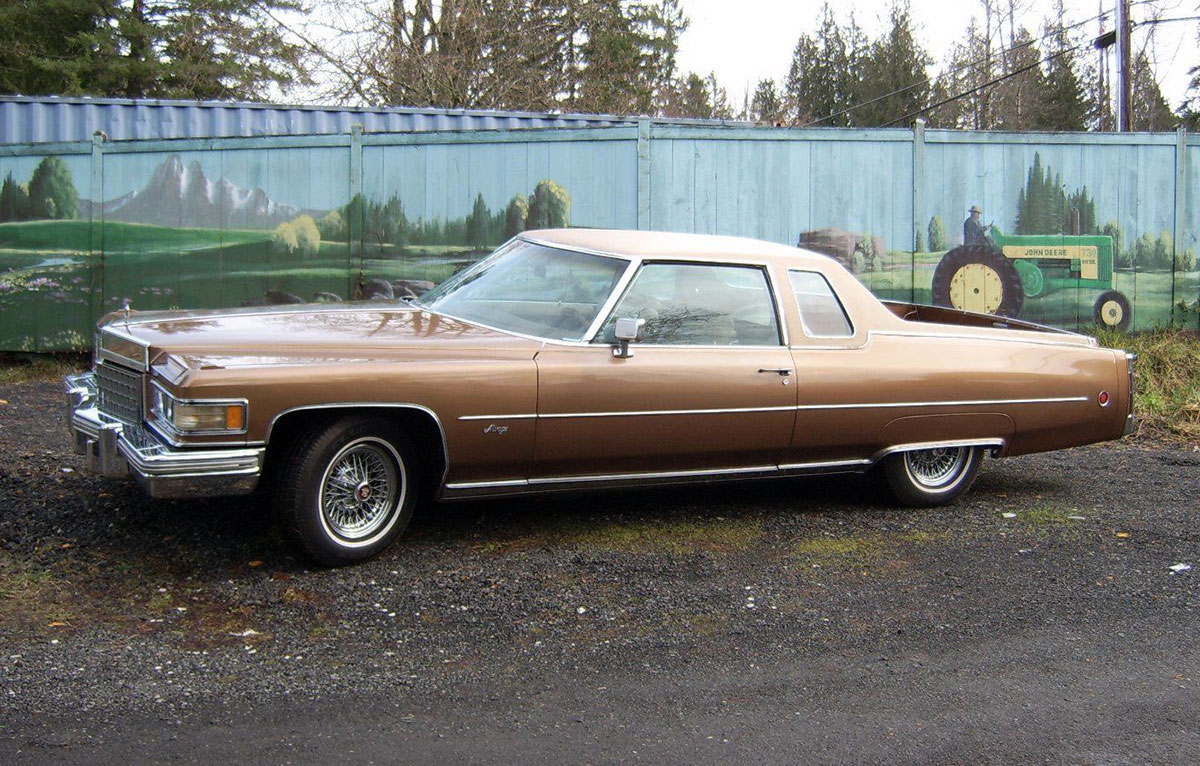
When the Cadillac Mirage pickup was introduced, many people were doubtful about its potential success.
Its unusual design essentially the trunk of a station wagon with four windows welded onto it gave the impression of an uncomfortable ride. Additionally, it was significantly weaker than other vehicles available at the time.
Cadillac has always been the preferred brand for luxury vehicles, and the collection of rare models amassed in his Canadian estate is no exception. One of the more surprising entries in his collection is a vehicle from the Malaise era—a Cadillac light utility vehicle.
Yes, you read that right: a Cadillac ute. A Ranchero/El Camino competitor, designed to haul tools and hardware, complete with a bed and tailgate.
It’s hard to picture wealthy Cadillac customers in their expensive shoes, covered in sawdust or manure, but that’s the reality of this rare model.
And it’s understandable, as Cadillac’s luxury division never aimed to produce anything that didn’t exude opulence. Even the hearses Cadillac manufactured were in a class of their own—after all, inequality doesn’t end with one’s heartbeat.
But a true gearhead’s mind is never far from the odd and inventive. Enter the Cadillac Mirage, an unusual creation born from a burst of genius. This model is rarely mentioned at Cadillac owners’ club meetings, and with good reason.
Produced for just two years, 1975 and 1976, the Mirage was a highly limited production vehicle, with the accepted number being around 200 units, though the exact total is unclear. The legendary custom builder Gene Winfield was put in charge of its production, and he recalls manufacturing about 60 units per year.
Regardless of the precise number, it’s undeniable that the Cadillac Mirage is a head-turner. The first one was purchased by the famous daredevil Evel Knievel, and, once in a while, one of these rare models surfaces for sale.
Steve Plunkett’s example is one of the 102 units fitted with fuel injection, converted from a regular Cadillac Coupe DeVille into a luxury pickup truck.
While the Chevrolet El Camino and Ford Ranchero were the standard choices for such vehicles, Cadillac fully endorsed the transformation of its flagship car into a utility vehicle. Notably, all Mirages were covered by the factory warranty, even though they lacked the rear part of the cabin.
Traditional Coach Works Limited was responsible for crafting these extraordinary creations, officially calling them “Sports Wagons”—a name reminiscent of Buick’s Sportwagon from a decade earlier.
However, despite the name, the Mirage wasn’t a wagon. It featured two doors, six windows (retaining the Opera windows from the Coupe DeVille), and a bench seat that could accommodate three passengers in the front.

